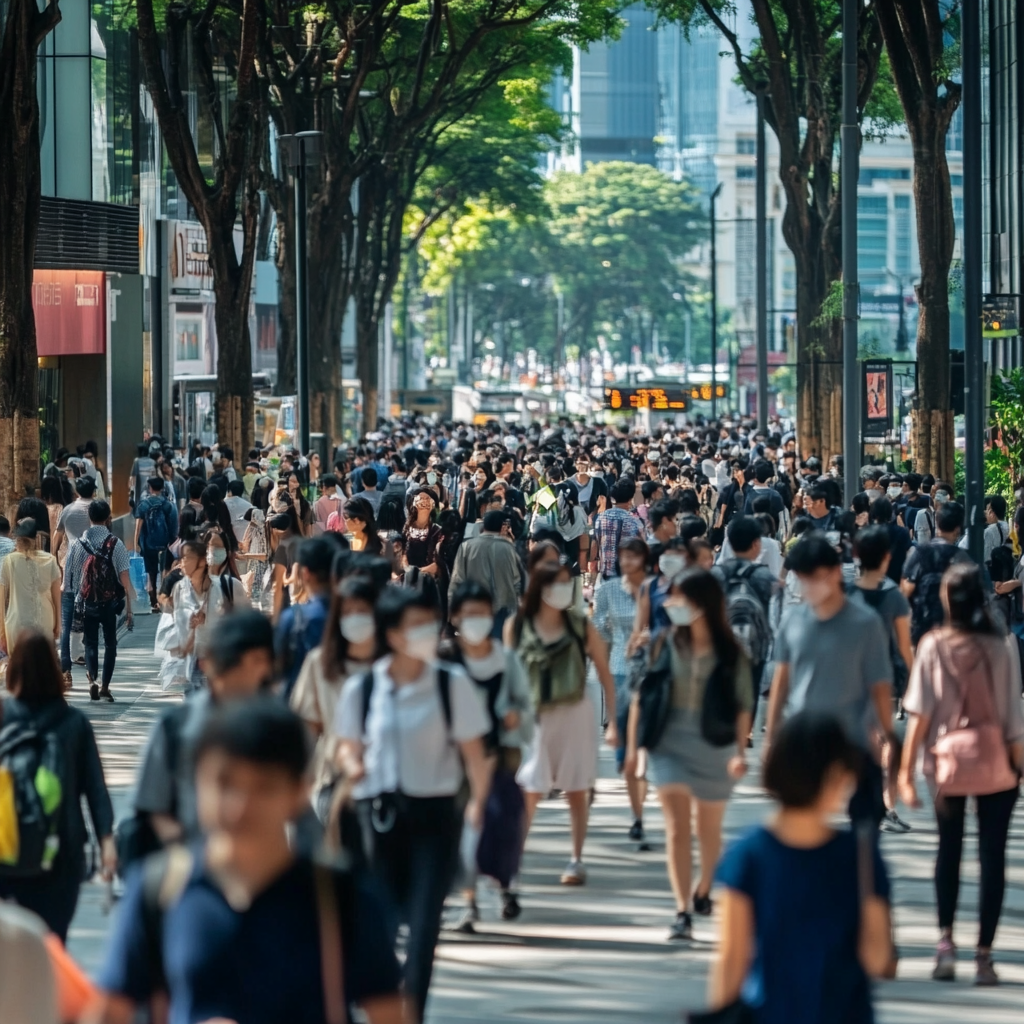Since the 1970s, Singapore’s total population has been steadily increasing. However, this trend reversed during the COVID-19 pandemic, leading to a significant population outflow.

According to official data, the population fell sharply from 5.7 million in 2019 to 5.4 million in 2022—a drop of 300,000 people in just three years, bringing the total population back to levels last seen before 2015.
In addition to the decline in population, issues of aging and low birth rates have become increasingly serious. As of June this year, 19.1% of Singaporean citizens are aged 65 and above. In other words, one in every five citizens is a senior.
This trend is expected to become even more pronounced in the coming years. By 2030, it is projected that one in four Singaporeans will be 65 or older. A report by Savills predicts that by 2033, 28.4% of the global population will be aged 50 and above. In Singapore, those aged 50 and above will make up 48% of the total population, ranking fourth highest globally.
At the same time, the birth rate has hit a historic low. According to the 2023 Population in Brief report released by Singapore’s National Population and Talent Division under the Prime Minister’s Office, only 30,429 new citizens were born in 2022—a decline of about 4% compared to the previous year.
The overall fertility rate of residents has dropped to just 1.04, the lowest on record. Aging and declining birth rates have become some of the most urgent issues facing Singaporean society today.
The most direct impact of a shrinking population is a labor shortage, with industries across the board competing for talent. In the post-pandemic era, human resources have become the key to business recovery.
On one hand, a significant number of Singaporeans are choosing to emigrate. On the other hand, elites from around the world are flocking to Singapore. Since the government relaxed conditions for self-employed Employment Passes (EP), wealthy individuals have been relocating to Singapore, while middle-class families are moving in for their children’s education—resulting in a visible immigration boom.
According to the 2023 Population in Brief, the number of non-residents in Singapore increased by 13.1% this year, or about 200,000 people, bringing the total to 1.763 million. In terms of permanent residents, 34,493 new PRs were added over the past year, pushing the total number beyond the pre-pandemic peak of 2019.
These figures clearly show that post-pandemic Singapore has become more attractive than ever to global talent. The oft-repeated phrase last year—”People around the world are flocking to Singapore”—has truly lived up to its name.




